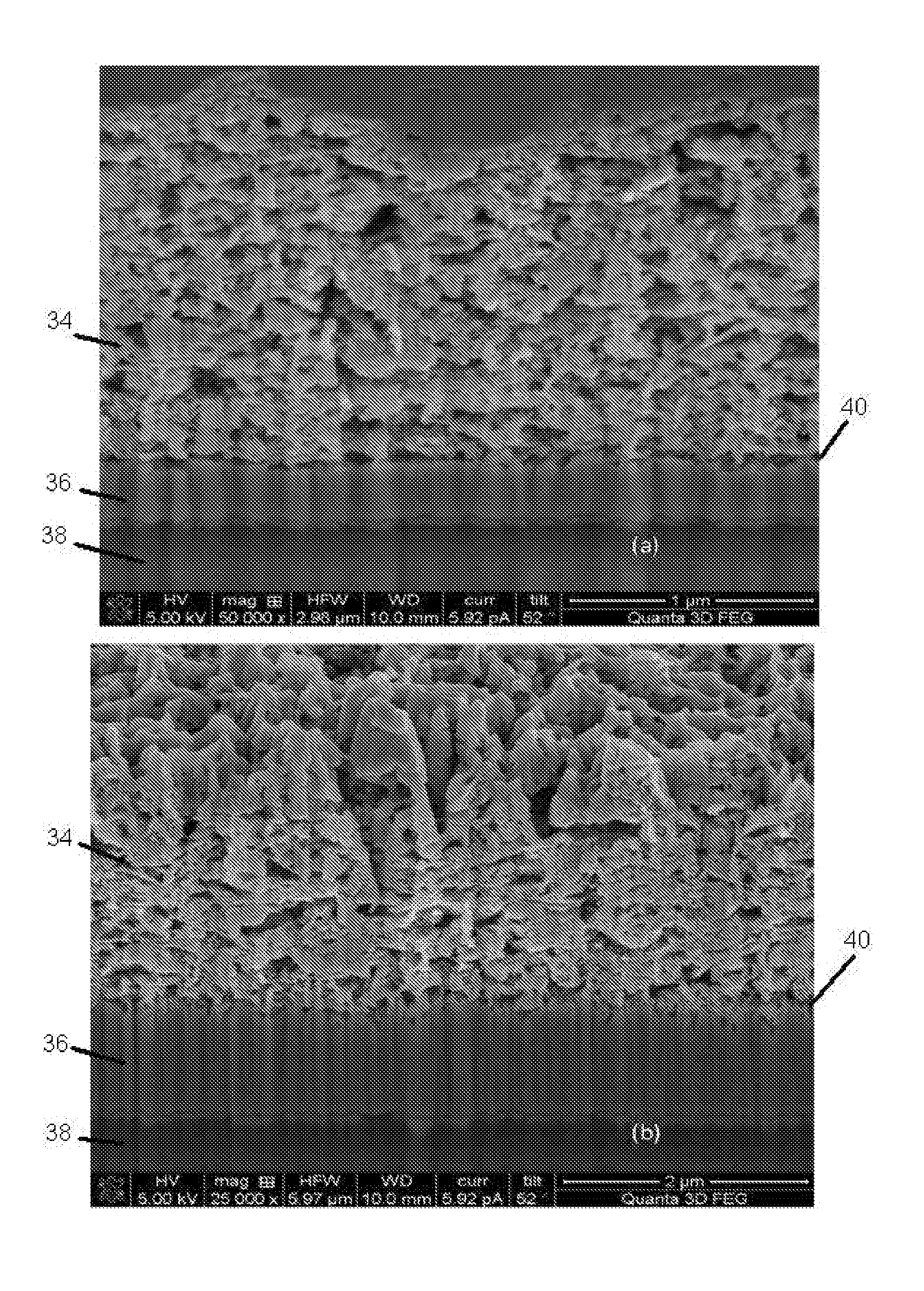Methods of manufacturing photovoltaic electrodes
a photovoltaic electrode and manufacturing method technology, applied in the manufacture of final products, basic electric elements, electrolytic capacitors, etc., can solve the problems of low efficiency of p-type metal oxides, limited effectiveness of tandem dsscs, inefficient light absorption capability, etc., to achieve better electrodes, high porosity, and high light absorption.
- Summary
- Abstract
- Description
- Claims
- Application Information
AI Technical Summary
Benefits of technology
Problems solved by technology
Method used
Image
Examples
example 1
NiOx Nanoparticles on FTO Glass Substrate
[0065]Sample Preparation
[0066]In order to prepare photovoltaic electrodes, fluorine doped tin oxide (FTO) glass substrates (3 mm thick) supplied by Mansolar. The glass substrates (2×2 cm) were ultrasonically cleaned in propanol followed by acetone, each for 5 minutes. Other typical substrates which may be used include indium doped tin oxide (ITO) glass and polymers e.g. PET.
[0067]A deposition layer medium was made, comprising NiOx nanoparticles (˜50 nm) suspended in methanol (20 mg / ml) as a dispersion medium. This deposition layer medium was deposited by spraying using a nebulizer (Burgener Mira Mist atomizer) which uses an inert gas to break up the suspension into small aerosol droplets. In this case, the inert gas used was nitrogen at a flow rate of about 2 litres / min. The nebulizer was moved over the surface of the substrate in a raster pattern using a computer numeric control (CNC) device with a line speed of 20 mm / s and a step interval o...
example 2
TiO2 Nanoparticles on Flexible Polymeric Substrate
[0097]Sample Preparation
[0098]Degussa P25 TiO2 nanoparticles with an average size between 20-25 nm were deposited on ITO-PEN coated substrate (where ITO stands for indium doped tin oxide and PEN for polyethylene naphthalate). The TiO2 was prepared in a suspension form by grinding the nanoparticles powder in an alumina mortar in order to breakdown the agglomerated particles. The ground paste was then transferred into a recipient using methanol solvent vehicle and diluted to a final concentration of 25-30 mg / ml and further sonicated using a sonication horn probe.
[0099]The TiO2 suspension was applied to the plastic substrate using a roll-to-roll spraying technique. In this technique the suspension is pumped through a nebulizer, shown in FIG. 11, and with the assistance of a pressurised gas (nitrogen) is atomised and projected at the surface of the plastic substrate mounted onto a CNC controlled (X-Y-Z) pneumatic table.
[0100]In addition ...
PUM
| Property | Measurement | Unit |
|---|---|---|
| particle size | aaaaa | aaaaa |
| particle size | aaaaa | aaaaa |
| particle size | aaaaa | aaaaa |
Abstract
Description
Claims
Application Information
 Login to View More
Login to View More - R&D
- Intellectual Property
- Life Sciences
- Materials
- Tech Scout
- Unparalleled Data Quality
- Higher Quality Content
- 60% Fewer Hallucinations
Browse by: Latest US Patents, China's latest patents, Technical Efficacy Thesaurus, Application Domain, Technology Topic, Popular Technical Reports.
© 2025 PatSnap. All rights reserved.Legal|Privacy policy|Modern Slavery Act Transparency Statement|Sitemap|About US| Contact US: help@patsnap.com



